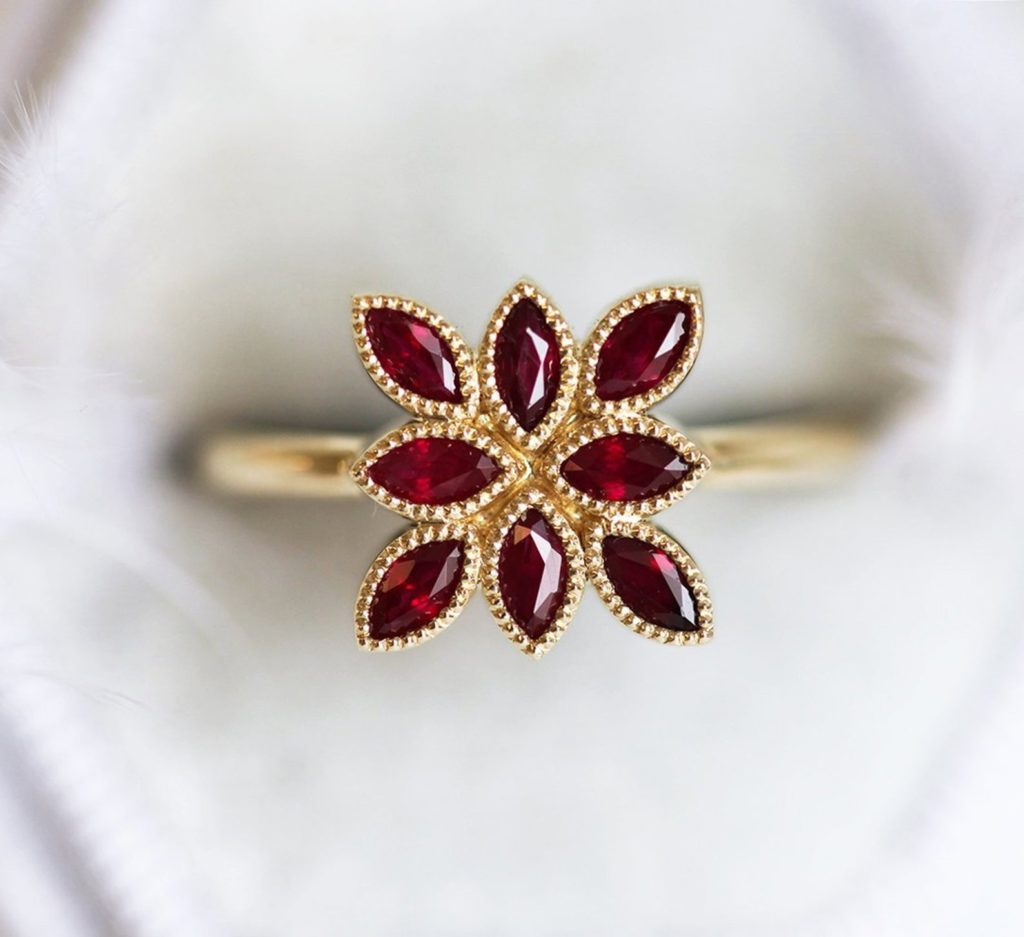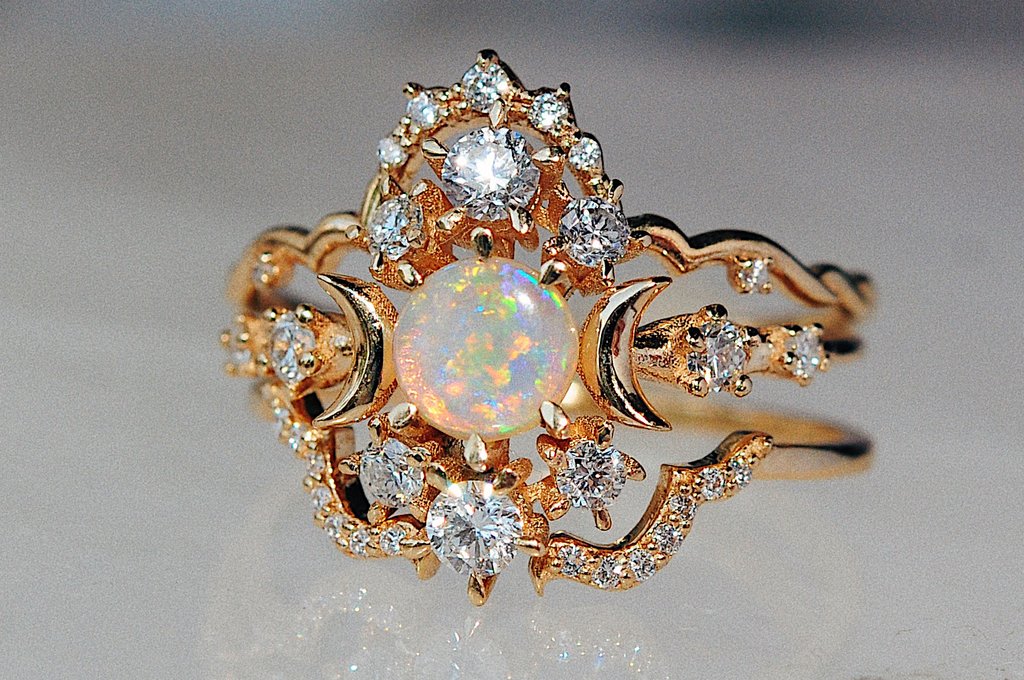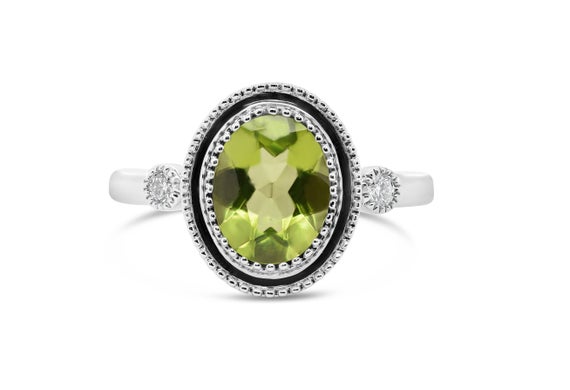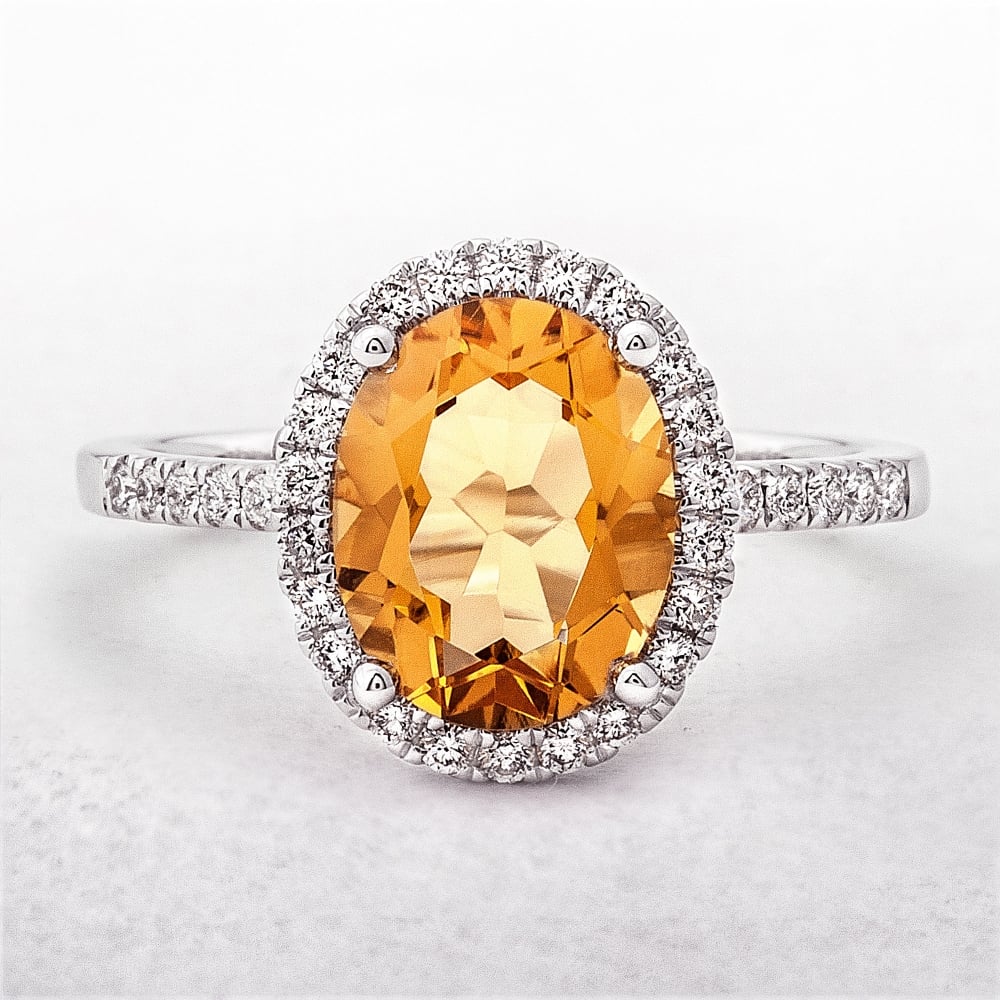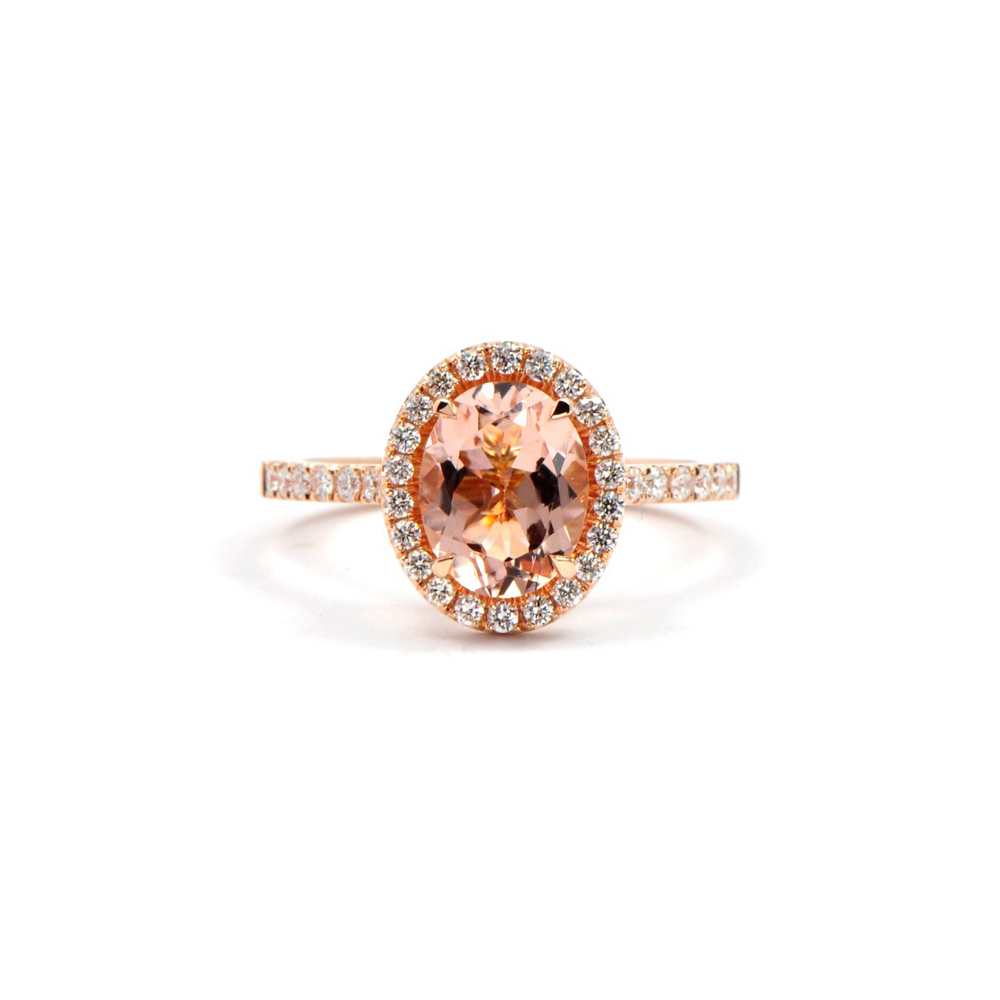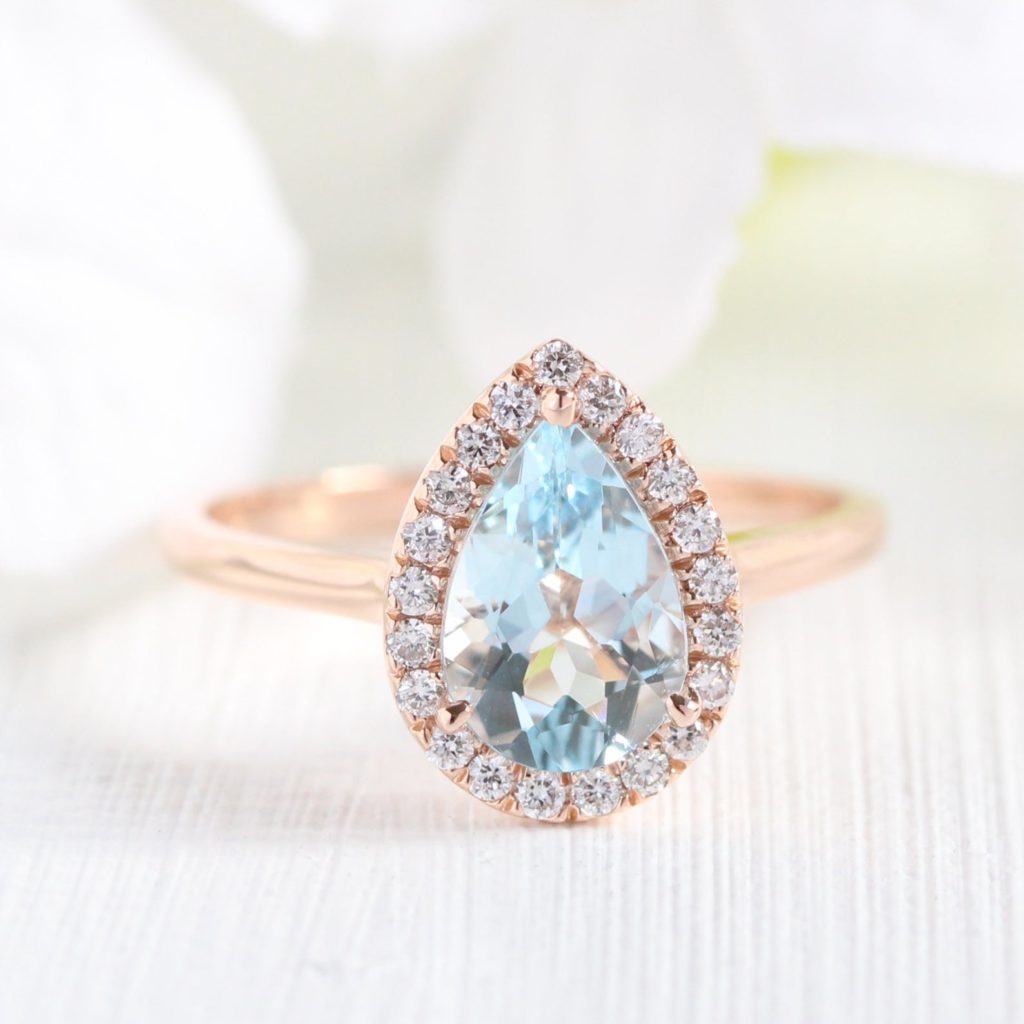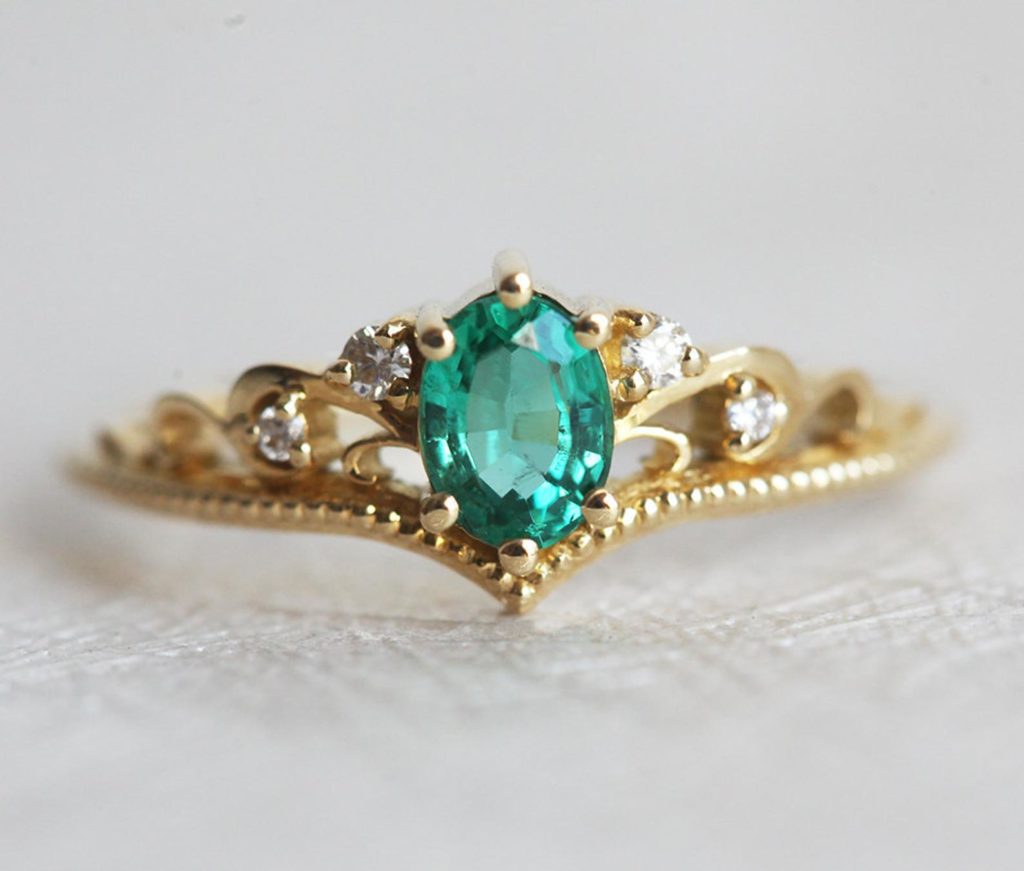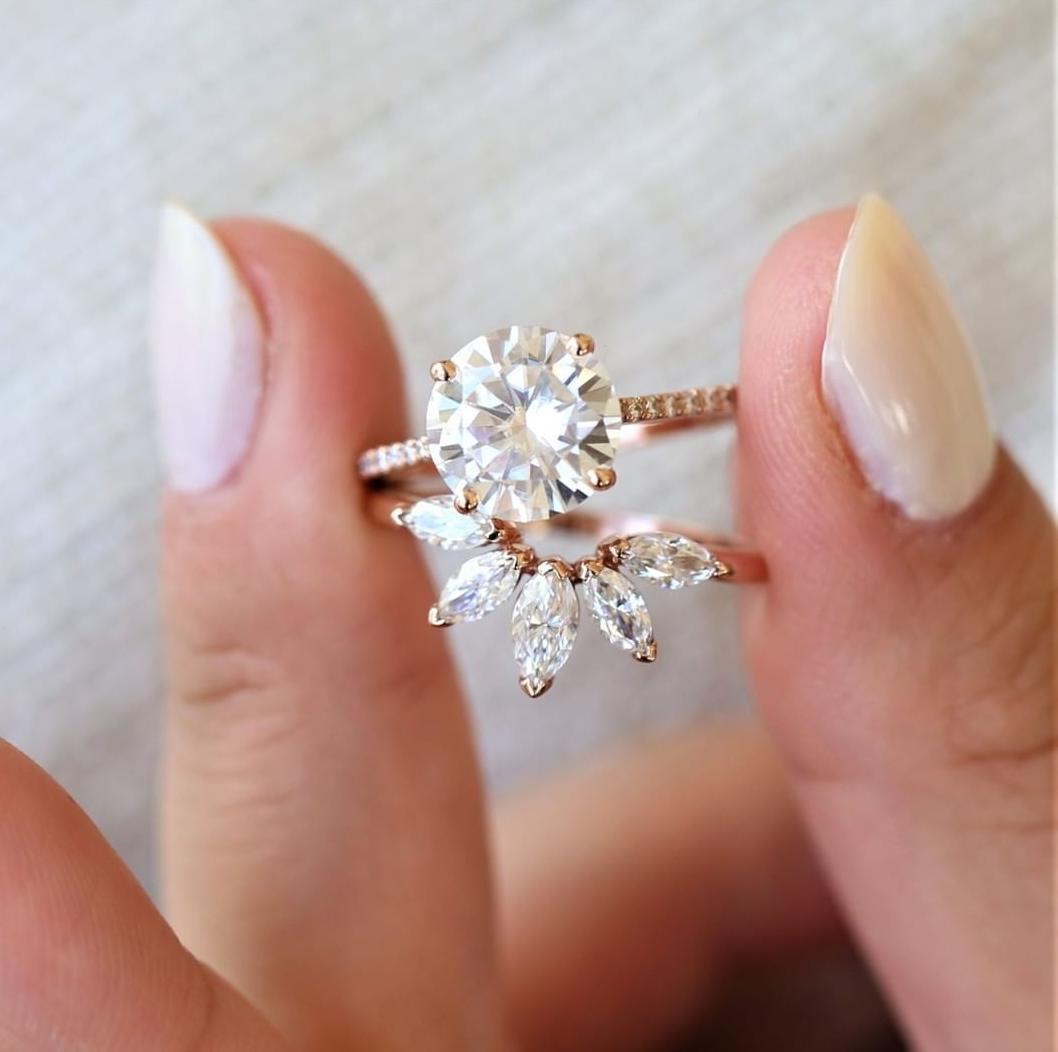While diamonds take center stage when it comes to engagement rings, they are far from the only beautiful stones available on the market. Many other precious and semi-precious gemstones (terms which in and of themselves are merely marketing terms, much like the rareness and exclusivity of diamonds themselves) are available which can offer something unique, while also providing some deeper personal meaning that maybe those pure, clear stones can lack.
Opening Image: Sofia Zakia
Ruby
With the highest per-carat price of any coloured stone, Rubies are probably the most important gemstone when you take diamonds out of the picture.
Birthstone for the month of July, rubies have a deep connection and symbolism with love. Rubies also come in at a 9 on the Mohs scale of hardness, putting them just behind diamonds and making them a highly durable gemstone, perfect for everyday wear.
Opal
Opal may be the most unique and spectacular choice of all as a stone for your engagement ring, but not one for fans of an understated look.
The best opals can command prices per carat that rival diamonds, rubies, sapphires, and emeralds, and the brilliance of an opal can rival any other stone, flashing every colour of the spectrum with an intensity and quality of colour that can surpass even the ‘fire’ of a diamond.
As Opal ranks the lowest of all stones we’ve looked at on the Mohs hardness scale, coming in at 5.5 to 6.5, this is a stone you’ll need to take good care of, and this might impact the choice of setting as you may want to opt for one that cradles the stone, like a bezel or halo.
Peridot
Sometimes mistaken for emeralds due to their green hue, Peridot is a vibrant, lighter green and the birthstone for the month of August
With a Mohs rating of 6.5 to 7, peridot is fairly durable but should be worn with some care so as not to scratch it.
This stone is particularly popular for art deco and antique styles that are well known for their vibrant use of colour.
Sapphire
Sapphires for September. This traditionally deep blue stone actually comes in myriad colours, red being the only real exclusion (coming from the same mineral, corundum, red examples of this stone are classified as rubies).
While people often request a white sapphire as a substitute for a diamond, sapphires will always traditionally have a deep blue hue, and the most valuable sapphires share this colour. Coming in at an 8 on the Mohs scale this is a truly classic gemstone that will last a lifetime.
Citrine
Deriving from ‘citron’ the French for lemon, citrine is the birthstone for November. A yellow variety of quartz, the colour can vary from pale to golden yellow varieties.
With a rating of 7 on the Mohs scale, citrine is a good choice for everyday wear, and with traditional connotations of success and prosperity, it’s a great choice for those looking for something a little bit out of the ordinary.
Morganite
Named after avid gem collector JP Morgan, Morganite is becoming a hugely popular alternative to diamonds when it comes to engagement rings. With a 7.5 to 8 Mohs rating, it’s a pretty durable stone, but you’ll still want to take care not to scratch it.
Rarer than diamonds in geological terms and coming in beautiful shades of pink, Morganite is becoming the anti-hero on a mission to break the stranglehold diamonds have had over the engagement ring industry for years.
Aquamarine
The birthstone for March, Aquamarine is unsurprisingly known as ‘the sailor’s gem’ due to its light blue colour’s association with the sea. Not so romantic at first, but if you think of it as the gem for ensuring safe passage across stormy seas, it might have a bit more significance for many couples! Aquamarine can also signify faithfulness, courage, and friendship.
The deeper the shade of blue, the more valuable the stone, so look for pure, clear blues when buying. Aquamarine comes in a 7.5 to 8 on the Mohs hardness scale, so is suitable for daily wear with care!
Emerald
Signifying wisdom, rebirth, and love, emeralds are a classically popular choice for engagement rings, often paired with diamonds.
Emeralds contain naturally occurring mineral deposits within the stone which are often seen as inclusions or rather beautiful imperfections since they make each stone truly one-of-a-kind, reflecting each couple’s unique story.
Slightly less durable than diamonds, coming in at 8 on the Mohs scale, Emeralds are still a gem to last forever.
Moissanite
Born from the stars, but lab-created for wear, Moissanite particles were discovered in a meteorite crater in Arizona in 1893 by a French scientist named Henri Moissan. He initially thought he had discovered diamonds, but soon later realised that the crystals were composed of silicon carbide.
As natural moissanite is incredibly rare, the stones you can purchase have been lab-created. Similar to diamonds in terms of hardness and colour, moissanite’s brilliance can be a somewhat more colourful affair, with some referring to it as a sort of ‘disco ball’ effect.
With a 9.25 Mohs rating, Moisannite comes in as the second hardest gemstone after diamonds, and at a fraction of the cost, with a far more ethical provenance that a lot of diamonds can boast, this is a serious contender to take over from diamonds as the stone of choice for engagement rings in the future.
-- Dani Farrell


